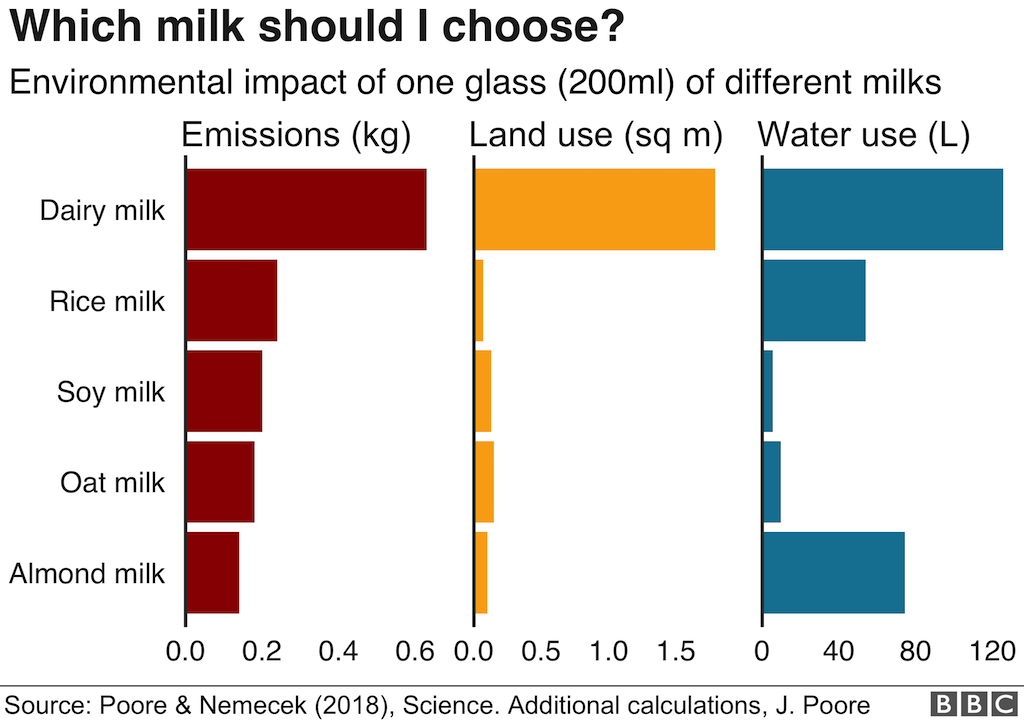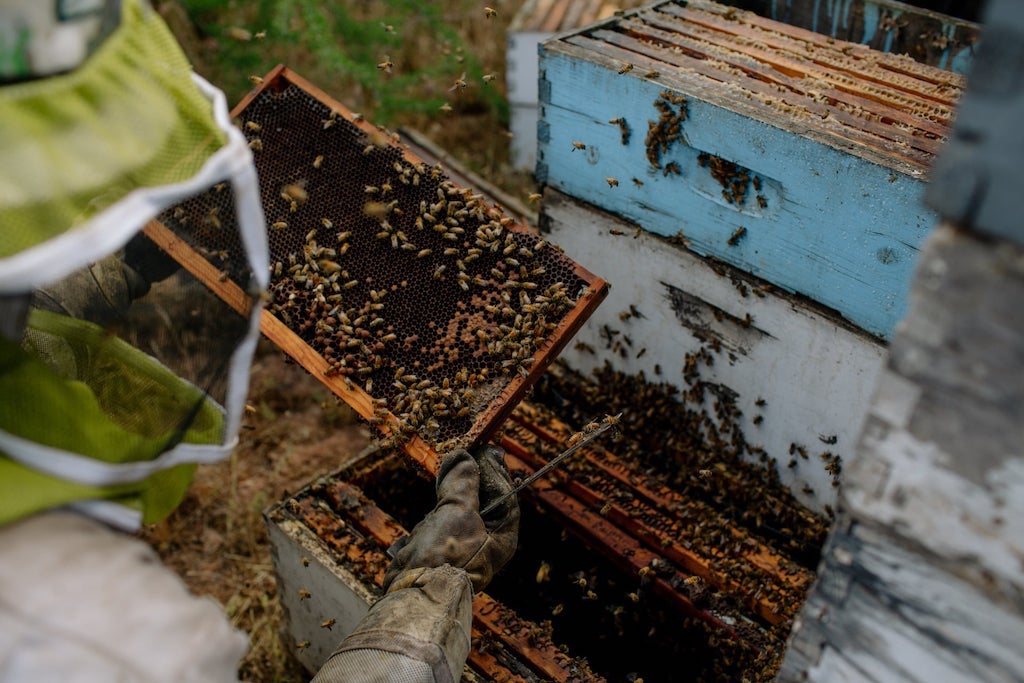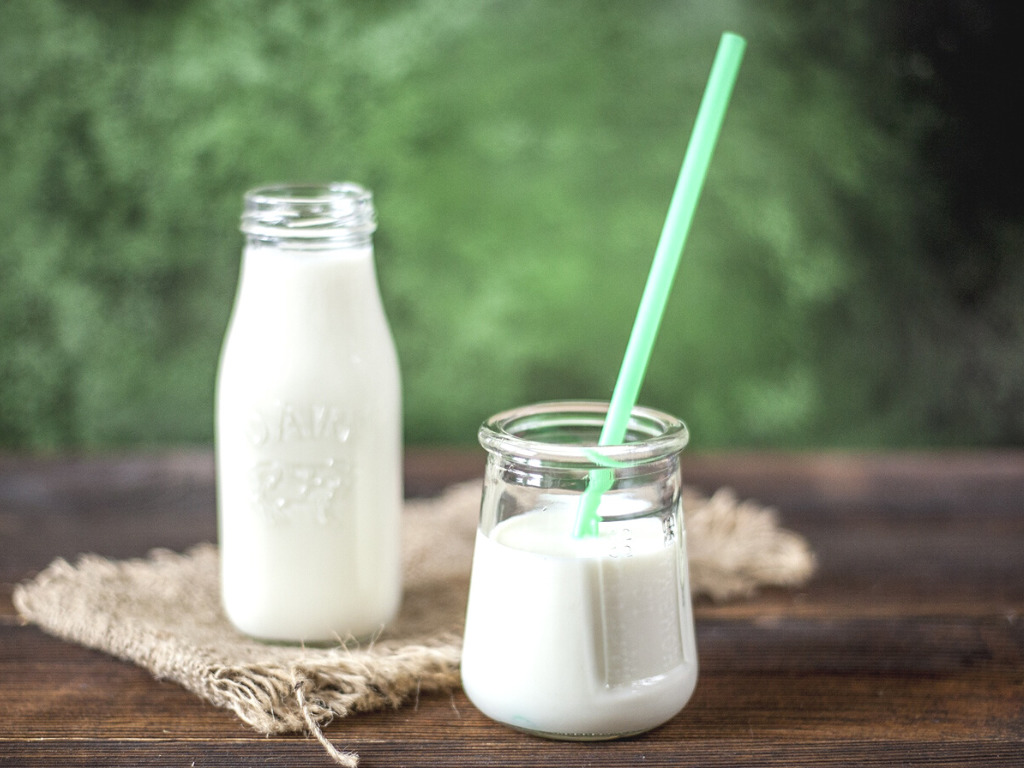4 Mins Read
In our Green Queen Food Footprint Series, we tackle some of the complexities surrounding food and examine which choices are really the most planet-friendly. Here, we compare dairy milk vs. almond milk, and how it fares against other types of plant-based milk as well.
With the climate crisis climbing to the top of the global agenda, more people are beginning to take notice of the connection between our consumption choices and the carbon footprint it leaves behind. While some questions about the footprint of food can appear to be relatively straightforward, the reality may not always be as simple as it seems.
Connecting the dots between dairy milk and the impact it leaves behind on our environment, more people are now switching to plant-based alternatives. Plant-based milk or plant milk are free from dairy and are typically made from ingredients such as soy, almond, cashew, oat and rice and coconuts.
Almond milk, in particular, has become a strong favourite amongst the dairy-free demographic. In the United States alone, almond milk consumption has exploded over 250% within 5 years, all the while massive dairy milk companies such as Borden Dairy and Dean Foods were driven to bankruptcy earlier this year.
This trend has also drawn in criticism, with some highlighting the high water footprint of almond milk. Some proponents of dairy have even gone so far to argue that consuming dairy is more environmentally friendly than the almond alternative. Indeed, if we look at the global averages from a 2018 University of Oxford study put into a graph by the BBC, almond milk does require more water to produce than soy, oat and rice milk. A single 200 ml glass of almond milk uses up around 74 litres of water, which is equivalent to a typical shower.

But the graph, which also illustrates the water, carbon emissions and land footprint of various plant-based milk and dairy milk, shows that almond milk is only the most resource-intensive amongst the plant-based milk. According to the Oxford researchers, producing one 200 ml glass of cow’s milk results in nearly 3 times the greenhouse gas emissions of any type of non-dairy milk, and uses up 120 litres of water to produce, not to mention the highest land use as well.
In other words, even if almond milk leaves behind a higher footprint than soy and oat milk, it is still far less damaging to the planet than dairy on all three environmental indices. So if you happen to be worried about methane and carbon emissions driving global heating as well as land and water wastage, you’re better off steering clear of all dairy and the best option is oat milk.
It is worth noting though that there are other key environmental problems posed by the production of almond milk. Recent reports have surfaced about the demands placed on the California almond industry, which is putting huge strain on the hives of bees used to pollinate almond orchards, wiping out as many as 50 billion honey bees within months.
In the survey involving commercial beekeepers in the United States, the beekeepers attributed the high mortality rate of their bees who pollinate almonds to the high usage of pesticides on almonds. This is exacerbated by the fact that almond pollination is especially damaging for bees because they are pushed to wake up from their annual period of winter dormancy earlier than usual, and in concentrated numbers, parasitic diseases can be easily spread among them.

However, organic beekeepers and conservationists have also reiterated that the underlying culprit for the bees’ high mortality rate is the practice of large-scale mechanisation of pollination used in industrial agriculture methods. The “Bee Better” certification programme, for instance, says that if bees are placed in a biodiverse landscape instead of a monoculture, and if farmers ditch pesticides for organic farming practices, they are likely to thrive in orchards.
But for now, because California’s industrial almond farming continues to supply 80% of the world’s almonds, the threat that the demand for almond production poses to bees is unlikely to be reversed anytime soon.
With this caveat in mind, if you are choosing between almond milk and different types of plant milk, then choosing the latter is more eco-friendly. As the graph earlier shows, oat milk, in particular, leaves the least impact, while soy milk trails closely behind. That being said, the bottom line is to avoid dairy milk and choose plant-based whenever possible.
Check out the other parts of our Food Footprint Series: Is choosing local always the most eco-friendly option?




